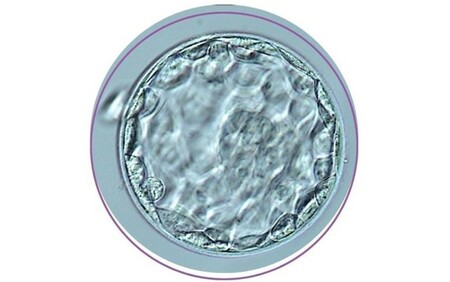Embryology & embryo development
We have four specialist embryology laboratories in Sydney, all accredited by the Reproductive Technology Accreditation Committee (RTAC) and operating seven days a week.
Here you will find a full range of associated services, including:
- In vitro fertilisation (IVF)
- Intracytoplasmic sperm injection (ICSI)
- Embryo culture and assessment
- Embryo cryopreservation (freezing)
- Embryo biopsy for Preimplantation Genetic Diagnosis (PGD)
- Preparation of surgically collected sperm
- Egg freezing
Meet our scientists
The IVFAustralia science team includes more than 50 scientists working in embryology, andrology and pathology. Learn more about our scientists here.
Embryo Development
As part of our ongoing improvements to patient care, a representative of the embryology laboratory may contact you on day three after your egg collection to inform you of the number of oocytes that have been fertilised and the development of these embryos.
What is a blastocyst?
A blastocyst is the stage of early development reached five days after fertilisation, containing a fluid-filled cavity, the blastocoel. Blastocysts have 100 to 150 cells and possess an inner cell mass (from which the embryo will develop) and the trophectoderm (outer layer of cells), which will eventually form the placenta.
Embryo grading – how does it work?
Rating blastocysts follows a three-step system of grading, including a number, first letter and second letter.
- The number shows the degree of the expansion of the blastocoel, ranging from 1 (cavity fills <1/2 of the embryo) to 6 (cavity is fully expanded and the blastocyst has completely hatched from the zona).
- The first letter indicates the inner cell mass (ICM) quality from A= well defined with many cells, to (C= a few cells).
- The second letter indicates the trophectoderm quality from A (many cells) to C (few and irregular cell layer).

In the picture above, you can see an embryo grade of 4AA, which would be a very good appearing blastocyst.
How are embryos stored at IVFAustralia prior to transfer?
At IVFAustralia, we use an innovative time-lapse technology called EmbyroScope+, to carefully monitor and analyse the development of embryos. It combines an incubator, high resolution camera and computer software to automatically take an image of an embryo up to every 10 minutes.
By obtaining accurate, in-depth data scientists can now use selection and de-selection criteria to try and identify the best embryo for transfer.
Evaluating Embryo Selection. The VISA study.
We have recently developed a new artificial intelligence tool for assessing embryos to choose the best one for transfer.
Using a research design called a randomised controlled trial, the embryo selection technique will be allocated at random to either having the embryologist choose the embryo or having iDA, our artificial intelligence system, choose the embryo.
If you’re a patient with us and want to learn more, speak to your fertility specialist or learn more here.